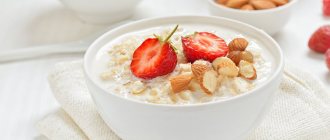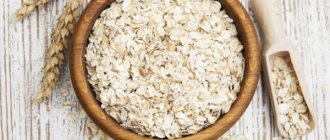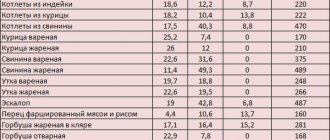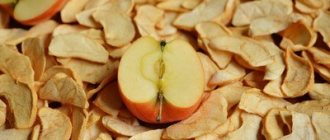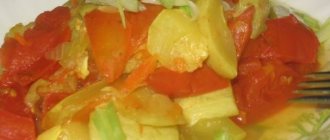The problem of excess weight is very common today among women and men. A decrease in the rate of metabolism (metabolism) leads to the fact that by middle age both of them begin to suffer from excess weight. Scientists have proven that poor diet and lifestyle are the most common causes of obesity.
Vegetables in any form are the main ally in losing weight. And the inclusion of stewed vegetables in your diet slowly but surely leads to an acceleration of metabolism and, as a result, normalization of weight. They are a source of many vitamins, minerals and trace elements. They are also rich in fiber, which can cleanse the body of waste and toxins clogging it.
It is not often that you meet a person who is not aware of the enormous benefits of vegetables. Of course, not everyone likes to eat them because of their unusual taste. And this is absolutely in vain. It should be noted how rich they are in vitamins and microelements necessary for humans. Also, their composition, characterized mainly by coarse fibers, promotes complete cleansing of the intestines and improves its performance.
Let's start with the fact that one of the most popular types of vegetable consumption is stewed vegetables. Scientists, nutritionists and ordinary consumers believe that the benefits of raw vegetables and fruits are much greater. On the one hand, this is true. But it should be noted that their proper preparation is of great importance. By the way, their calorie content will undoubtedly please those who are on a diet and watching their figure.
Of course, in stewed vegetables it is to a large extent several times higher than the energy value of fresh ones. But this can easily be explained by the fact that additional components, such as fats (from meat, fish or oil), are added to it during the cooking process.
The benefits of stewed vegetables
This cooking method is considered the most gentle. During the process of cooking, baking, blanching and other heat treatment methods, most of the valuable vitamins, minerals and trace elements are lost. Eating stewed vegetables is especially useful for gastritis and gastric ulcers. In addition, this food is recommended for overweight people and diabetics.
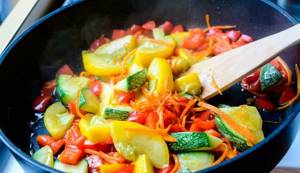
Vegetable stew. Calorie content per 100 grams
Stewed vegetables, the calorie content of which depends on the processing method, have the following advantages:
- high content of vitamins, minerals and microelements, especially necessary during the diet;
- cooking without using oil guarantees low calorie content of the dish;
- during heat treatment they do not lose fiber, which helps quickly saturate and cleanse the body;
- Due to the low carbohydrate content, weight loss occurs faster, while the liver is not overloaded.
Useful video
Watch this video on how to cook stewed beans with vegetables:
Similar articles
- Breakfast for weight loss: how to make it, healthy recipes...
Eating breakfast for weight loss is a must. There are recipes for a simple, healthy, dietary breakfast that is suitable for proper nutrition. There are many options for combining dishes. The main thing is that you can eat low-calorie and healthy foods. Read more - Cabbage for weight loss: recipes for weight loss...
Regular cabbage will help for weight loss and in the fight for a slim waist. Absolutely any will do: fresh, stewed, pickled, white and colored. The recipes are quite varied. They prepare both soup and salad with tomatoes. Read more
- Meat for weight loss: is it possible and what kind - fried...
Is it possible and what is the best meat to choose for weight loss? Is fried or boiled or steamed suitable? What dietary recipes exist for proper adherence to a diet with meat? Read more
Fiber in fruits
Fiber is a substance of plant origin that is practically not digested, but, having fulfilled its function in digestion, is excreted by the body. However, this process is not as simple as it might seem at first glance. Passing through the intestines, fiber cleanses it of “food residues,” toxins and excess fat.
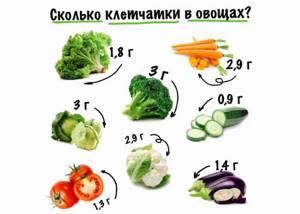
Nutritionists agree that you should consume at least 25 grams of dietary fiber daily. To increase the beneficial effects of fiber on the body, it is important to maintain water balance and drink 1.5-2 liters of still water daily.
Stewed vegetables that contain the most fiber per 100 g:
- pumpkin – 5.74 g;
- green beans – 3.4 g;
- carrots – 2.4 g;
- white cabbage – 2.2 g;
- cauliflower – 2.1 g;
- spinach – 1.3 g.
How the calorie content of foods changes depending on the cooking method
You should not trust the energy value of the product. After all, how you are going to prepare it is also important. For example, potatoes become more nutritious after cooking, the nutritional value of pasta decreases after cooking, and beef can easily be included in the diet menu if it is baked correctly.
Bright Side studied how many kilocalories are contained in 100 g of foods prepared in different ways and found out whether the nutritional value of a dish is always related to its health benefits.
Mashed potatoes, baked and fried
Boiling potatoes increases their calorie content by about 30% due to the starch in their composition. It is recommended to slightly undercook the vegetable or even bake it in the oven. When frying, potatoes absorb oil, which increases their calorie content, and such a dish can no longer be called healthy.
Corn porridge and corn flakes
Corn grits are used to prepare both dishes. But due to a special production process and additives, the flakes contain several times more calories and sugar than regular corn porridge, and are therefore considered less healthy.
Roast beef and grilled steak
Beef can be included in the diet menu if you know how to cook it: roast beef baked in the oven contains much less calories than boiled chicken and especially fatty steak, even if you cook it on the grill.
Chicken boiled, grilled and fried
Chicken contains the same amount of calories whether it is boiled or grilled. But when frying, meat absorbs some of the oil and because of this it becomes more caloric and less healthy. If you're counting calories, don't eat leather.
Fried and lightly salted salmon
Lightly salted salmon is very high in calories, although this largely depends on the salting method. It is not recommended to be eaten frequently by people who follow a healthy diet. It is better to bake the fish in the oven or grill it.
Steamed champignons, fried, marinated and stewed in sour cream and cream sauce
If boiled champignons contain approximately 28 kcal per 100 g, then for fried mushrooms this figure is already 2-3 times higher due to the oil that they absorb like a sponge. The amount of protein in them decreases, and the amount of fat increases.
Canned champignons, on the contrary, have even 2 times less calories than fresh ones. True, they cannot be called useful either: during preservation, most of the vitamins and minerals are destroyed. Mushrooms in sour cream sauce are traditionally considered a light, dietary dish, although in terms of calories it is comparable to a fried pork steak.
The calorie content of rice depends on the cooking technique. If you are on a diet, then try cooking rice according to the following recipe: boil water, add 1 tsp. coconut oil and 1/2 cup rice. Cook over low heat for 40–50 minutes, and then put the rice in the refrigerator for 12 hours. Just reheat it before serving. This method allows you to reduce the calorie content of the finished dish by 2-3 times.
Non-starchy and starchy vegetables
Starchy vegetables contain starch. During digestion, it turns into glucose, the most common form of polysaccharides. Non-starchy vegetables, due to the lack of starch, are especially useful for people who want to lose weight.
The highest percentage of this substance is found in root vegetables and some grain crops, which accumulate nutrients for the growing season of the plant itself and its future shoots. There is an opinion that the record holder for starch content is potatoes, however, this is not entirely true, although it has a fairly high content of the substance (16-18%).
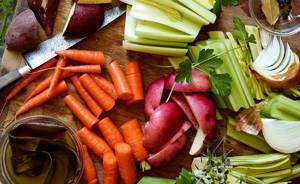
If you include starchy vegetables in your diet, you need to combine them correctly, for example, with green non-starchy fruits, vegetable or animal fats. What you shouldn’t do is serve them together with protein products, sugar, and acids.
Basic rule: one dish - one type of starchy vegetables. Non-starchy vegetables should be the basis of your diet when losing weight. The only thing that nutritionists do not recommend combining this type of product with is milk, as well as sauces, cheese, sour cream and other dairy products.
The classification of vegetables is shown in the table:
| Starch | Moderately starchy | Non-starchy |
| potato | carrot | eggplant |
| zucchini | soybeans | greenery |
| legumes | cauliflower | onion |
| pumpkin | turnip | Chinese cabbage, cabbage, broccoli |
| beet | asparagus | |
| radish, radish | cucumbers | |
| parsley roots, horseradish | Bell pepper | |
| garlic |
Preparing the vegetable side dish
Stewed vegetables can be called a signature dish, because every gourmet can independently determine the set of ingredients. Accordingly, these treats will differ in taste and nutritional value. We offer you a simple recipe for making vegetable stew. We use seasonal vegetables, the result is a completely budget-friendly and nutritious dish.
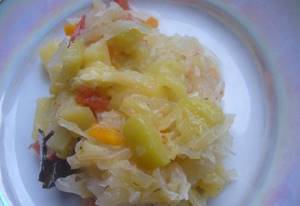
Ingredients:
- white cabbage - one fork;
- potatoes - four tubers;
- laurel leaf - two pieces;
- fresh tomato – one or two pieces;
- salt – ½ teaspoon. spoons;
- carrot - one root vegetable;
- zucchini - one piece;
- onion - one head;
- dried dill - one teaspoon. spoon;
- refined vegetable oil - four tablespoons. spoons.
Preparation:
- To make the stew juicy, it is best to use young zucchini and potato tubers. Let's prepare the necessary vegetables according to the list.
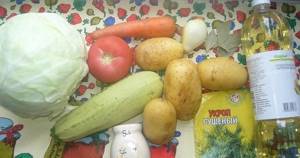
- Remove the top leaves from the cabbage fork. Next, chop the head of cabbage into strips. You can use a special grater.
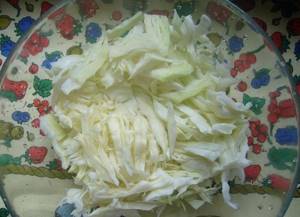
- Peel the potato tubers and wash them. Dry with napkins and cut them into medium-sized cubes.

- If the zucchini is young, then there is no need to remove the skin from it. Otherwise, remove the seeds and skin.
- Shred the squash pulp into cubes approximately the same size as the potatoes.
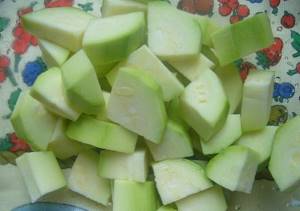
- Shred the carrots and cut the onion into small cubes.
- Cut fresh tomatoes into cubes or slices.
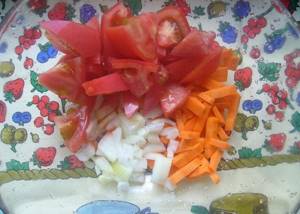
- Pour the specified amount of refined vegetable oil into a thick-walled dish, roasting pan or cauldron. Warm it up slightly.

- We will lay out the vegetables in layers. First comes shredded cabbage, then potatoes and zucchini.
- Next we lay out the tomatoes, chopped carrots and onions.

- Season with salt and dried dill. You can also use fresh herbs.
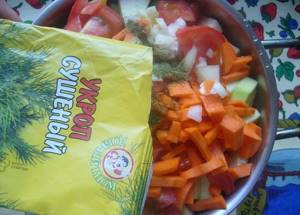
- Add about 200 ml of filtered water here.
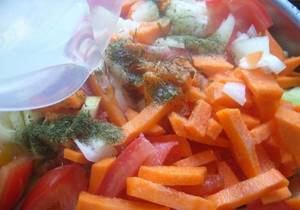
- Cover with a lid and simmer the vegetables in a closed container over moderate heat for half an hour.
- Mix the finished stew and serve it warm or chilled.
Which stewed vegetables are harmful?
Despite all the beneficial qualities recognized by doctors, nutritionists and chefs all over the world, scientists have identified one drawback to their use. As it turned out, stewed and fried vegetables are harmful to teeth. The fact is that during culinary processing the concentration of acids in them increases, which negatively affects the condition of the teeth and leads to caries.
It is better to exclude stewed vegetables, which are low in calories, from the diet:
- zucchini;
- eggplant;
- Bell pepper.
Dentists recommend being more attentive to hygiene issues, especially if a person likes to eat fried eggplants. After eating, be sure to rinse your mouth with warm water. Infectious disease specialists also call for excluding frozen corn from the diet.
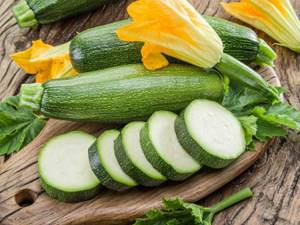
Scientists have found that it can cause leaf cutter infection. The bacteria, called Listeria, causes mild intestinal disorders in adults, but for children, the elderly and pregnant women, infection can lead to poisoning and even death. Listeria has been found not only in frozen corn, but also in frozen beans and spinach.
An important component of dietary nutrition
What are the benefits of vegetables on a diet? Firstly, the body spends less energy on their breakdown and absorption than on milk or meat. Secondly, they create volume in the stomach and a person gets full faster. And finally, peristalsis is regulated, which is extremely important for rapid weight loss. Asparagus and beans contain vegetable protein, which nutritionists advise slimming people to replace animal protein to make the cleansing process faster.
Vegetables contain essential microelements for humans, vitamins, pectin, organic acids and minerals.
But not all of them are equally healthy: green peas, like potatoes beloved by Russians, are quite high in calories. And, if you are watching your figure, it is important to know clearly: how much exactly, beets or zucchini. Any diet cannot do without.
List of the most high-calorie fruits
Plant foods that contain the most calories:
- melon. This melon crop, 100 g of which contains approximately 35 kcal, despite the fact that most of its composition is carbohydrates. People suffering from diabetes should completely exclude it from the diet or strictly limit it;
- kohlrabi. The vegetable is high in fiber, which makes it especially beneficial for people with digestive disorders. Fresh kohlrabi contains 42 kcal, but depending on the cooking method, this figure may increase;
- beet. This healthy root vegetable contains 49 kcal. Despite the high content of fiber and vitamins, nutritionists recommend limiting its consumption to people on a diet. The fact is that boiled beets have a high carbohydrate content - 10.8%;
- sweet potato. Boiled fruits contain about 60 kcal. Due to the high amount of sugars, sweet potatoes should not be eaten by people suffering from diabetes and overweight;
- Jerusalem artichoke. Jerusalem artichoke is characterized by a high carbohydrate content - 12%, which is why experts in the field of dietary nutrition strongly do not recommend including it in the diet of people who want to lose weight;
- potato. The number of calories in it directly depends on the method of preparation. Boiled and stewed fruits contain 80 kcal, fried ones - almost 2.5 times more, and potato chips - 6.5 times more;
- corn. The calorie content of boiled corn during heat treatment increases to 110 kcal, and canned corn – to 120 kcal;
- lentils. The high calorie content of the product - 110 kcal - is explained by the significant content of starch and carbohydrates;
- beans. 100 grams of boiled beans contain 123 kcal;
- chickpeas This is the variety of pea with the highest calorie content from the presented list of products - 127 kcal per 100 grams. This figure may increase depending on the cooking method.
Possible harm
Stewed cabbage can cause inconvenience for men: if it is consumed excessively, problems with the genitourinary system and a slowdown in the production of seminal fluid may occur.
Consequences of overeating stewed cabbage:
- diarrhea;
- hypothyroidism (lack of thyroid hormones).
It is forbidden to consume the stew if you have an individual intolerance. You can recognize an allergy to this food by the signs of flatulence and allergies that arise.
Contraindications to eating stewed cabbage include the following diseases and conditions:
- diarrhea;
- stomach and duodenal ulcers;
- inflammation of the mucous membrane of the stomach walls (gastritis);
- increased stomach acidity;
- problems with the pancreas (pancreatitis);
- infectious inflammation of the mucous membrane of the small and large intestines;
- non-infectious inflammatory process of the small and large intestines (enterocolitis);
- gallbladder pathology (cholecystitis).
The recovery period after surgery in the chest and peritoneum is also a contraindication.
The stew should not be consumed if you have kidney disease, for which you should adhere to a salt-free diet.
Dietary dishes made from vegetables prepared by stewing promote effective weight loss. The right time for such weight loss is spring and summer, when seasonal vegetable fruits ripen. This will allow you to eat fresh foods and reduce diet costs to a minimum.
Where are the fewest calories?
Stewed vegetables should undoubtedly be included in the diet, but only paying attention to the calorie content. Most of them saturate the body with fiber, which means that a person will receive the necessary energy and will be able to suppress hunger.
Low calorie foods include:
- carrot. This vegetable is one of the best dietary products. It has a pleasant sweetish taste; it can be added to salads, stewed, boiled and baked. Half a cup of grated carrots contains 30 kcal;
- Bell pepper. Due to the high content of vitamin C, sweet peppers speed up metabolism, burn fat, strengthen the immune system, suppress hunger, while 100 g of product contains no more than 40 kcal;
- cucumber. It is not only the lowest-calorie vegetable (100 g contains 15 kcal), but also perfectly refreshes and tones. It can be used for preparing salads, drinks, cold appetizers;
- tomato. One medium tomato contains just over 20 kcal. Thanks to the acids in its composition, tomato is able to break down fats and carbohydrates. It also contains a lot of fiber, vitamins and microelements, which makes it an indispensable product in dietary nutrition;
- zucchini. This vegetable, like cucumber, has a high water content and a minimum of calories, only 17 kcal per 100 g of product;
- mushrooms. They are a valuable source of protein necessary for the construction of new cells. Therefore, some of their types are recommended to be included in the diet of people on a diet, especially since 100 g of the product contains no more than 50 kcal;
- broccoli. One of the healthiest and lowest-calorie types of vegetables. A serving of steamed broccoli contains just over 30 kcal;
- cauliflower. Very often, nutritionists recommend serving cauliflower as a side dish. One serving of this vegetable contains only 25 kcal;
- pumped cabbage. It is noteworthy that cabbage is one of the few foods containing Omega-3 fatty acids. In addition, due to its low calorie content (30 kcal per 100 g) and high nutritional value, cabbage can be consumed in almost all types of existing diets;
- spinach. 100 g of fresh or 50 g of stewed spinach contains only 21 kcal.
- celery. Celery root is a tasty and healthy product that is equally good both fresh and thermally processed. It is considered one of the best foods for dietary nutrition. There are only 16 calories in 100 grams of celery.
- lettuce leaves. A bunch of green salad contains no more than 10 kcal. Regardless of the variety chosen, the number of calories will be approximately the same.
- asparagus. It contains fiber, vitamins, microelements, while being free of fat and cholesterol. 100 g of product contains only 20 kcal.
How to cook vegetable stew without oil
Repost
It is not necessary to add oil to vegetable stew. You can cook without any oil at all. In fact, butter (which is not healthy at all) usually adds fat and calories to a dish.
Nutritionist Julianne Heaver says: “Contrary to popular belief, butter is not a health food. Butter is 100 percent fat, with 120 calories per teaspoon of butter, which is low in nutrients but high in calories. Although some oils contain nutrients in small quantities, they provide no real benefit. Reducing or eliminating oil intake is an easy way to reduce your calorie and fat intake.” Thus, it is better to cook vegetable stew without oil if possible.
Here's how to do it:
1. Buy or make a good vegetable broth.
Instead of adding vegetables directly to the pan, add water or vegetable broth first. The problem is that you need to prepare it and buy it in advance, but since you are buying butter anyway, this will not cause you any extra hassle.
Making broth isn't very difficult - you can find a great low-sodium broth recipe, and then you're ready to make vegetable stew without oil. Don't feel like you're wasting your time and money! Vegetable broth can be used in soups, sauteed vegetables, and can even be frozen into cubes for later use.
2. Find a non-stick frying pan or wok.
Since oil lubricates the pan and prevents food from burning, skipping it can cause some inconvenience. If you don't already have a good non-stick frying pan, it's worth buying one.
Don't feel like you'll never use it or that you're wasting money on extra kitchen utensils because this frying pan will last you a very long time if you take good care of it and it's very multi-functional. Whatever brand you choose, make sure that the coating is not made from very harmful materials (choose an environmentally friendly coating if possible), and be sure to wash the pan by hand so as not to scratch the coating.
Table of calorie content of stewed vegetables per 100 g, BJU
Stewed vegetables, the calorie content of which does not change when stewed without the use of oil, are presented in the table:
| Vegetable | Calories per 100 g | Carbohydrates | Squirrels | Fats |
| potato | 83 | 19,7 | 2 | 0,4 |
| onion | 43 | 9,5 | 1,7 | 0,2 |
| carrot | 33 | 7 | 1,3 | 0,1 |
| cauliflower | 29 | 4,9 | 2,5 | 0,3 |
| White cabbage | 28 | 5,4 | 1,8 | 0,1 |
| zucchini | 27 | 5,7 | 0,6 | 0,3 |
| red sweet pepper | 27 | 5,7 | 1,3 | 0,1 |
| eggplant | 24 | 5,5 | 0,6 | 0,1 |
| tomatoes | 24 | 3,8 | 1,1 | 0,2 |
| sweet green pepper | 23 | 4,7 | 1,3 | 0,1 |
| broccoli | 23 | 1,7 | 3,3 | 0,2 |
| zucchini | 19 | 2,2 | 1,6 | 0,4 |
| cucumbers | 15 | 3 | 0,8 | 0,1 |
| asparagus | 14 | 1,2 | 1,9 | 0,1 |
Product calculator
Enter the amount of the product “Jewish Tsimmes (stewed vegetables)” to calculate its nutritional value
| Property | Meaning | % of normal | |
| Calorie content, kcal | 135,7 | 6.75 | 6.75% |
| Proteins, g | 3,1 | 2 | 2% |
| Carbohydrates, g | 17,7 | 6.8 | 6.8% |
| Fats, gr | 6,3 | 13.64 | 13.64% |
Recommended serving sizes. Daily norm
Daily intake of vegetables and fruits: 300-400 g. What is approximately:
- 1 medium apple;
- 1 tomato;
- 2 large apricots;
- 1 banana;
- 1 cucumber;
- 1 carrot;
- a handful of berries;
- 0.5 grapefruit;
- medium sized orange.
This is the minimum norm for an adult and recommended by WHO.
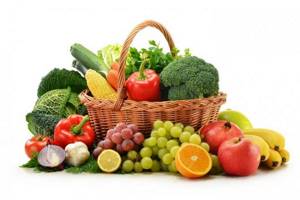
The more fruits, berries and vegetables you eat, the better for your health. The variety in this case is the method of their preparation. It is necessary to include stewed, boiled, steamed vegetables in the diet; they can be added to salads, snacks, soups, side dishes and casseroles. Starchy fruits should not be combined.
Recipes for stewed vegetables with calorie content
Stewed vegetables, the calorie content of which does not increase after heat treatment, must be properly cooked.
To do this, you must follow the rules:
- Vegetables cooked steamed or in a slow cooker retain the maximum amount of nutrients;
- It is important to choose the right cookware. A pan with a thick bottom is best for stewing. Among the manufacturing materials, preference should be given to steel;
- it is advisable to simmer vegetables over low heat under a lid for no more than 40 minutes;
- Before cooking, it is better to finely chop the cabbage; the remaining vegetables can be coarsely chopped;
- It is best to stew vegetables in their own juice, or by adding a little water;
- if only seasonal products are on sale, they can be combined with frozen ones, which should first be defrosted naturally. If you cook exclusively frozen vegetables or add fresh ones to them, defrosting is not required;
- Bay leaf is considered an excellent seasoning for stewed vegetables; you need to add it 10 minutes before the dish is ready.
The time required to cook the vegetables is:
- eggplants and zucchini – 25 minutes;
- cabbage and potatoes – 50-60 minutes;
- onions and carrots – 20 min;
- beets – 30 min.
On the water
Cooking features:
- It’s better to use a deep saucepan or cauldron, so the vegetables will retain their flavor;
- acidic additives, such as lemon juice or tomato, must be added 10 minutes before the end of cooking. If you do this earlier, the total cooking time will increase;
- you need to add seasonings to the dish, since stewing in water makes vegetables tasteless;
- Before cooking, the tomatoes must be doused with boiling water and the skins removed.
To prepare vegetables, you need to take:
- zucchini – 1 pc.;
- tomato – 2 pcs.;
- medium-sized onion – 1 pc.;
- tomato sauce – 2 tbsp. l.;
- water – 400 ml;
- salt – 4 g.
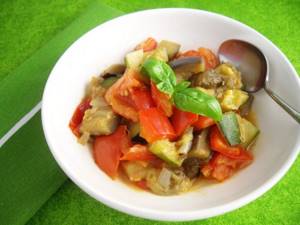
Cooking process:
- Wash all components using a soft washcloth.
- Cut the onion into half rings and the zucchini into cubes.
- Grate the carrots.
- Place the vegetables in the pan in layers, starting with the onion, then the carrots and zucchini.
- Cut the tomatoes into slices and place on top of the remaining vegetables.
- Fill the dish with water and add tomato sauce.
- Add salt.
- Start simmering and continue for 30 minutes. over low heat.
The calorie content of such a dish is 20 kcal per 100 g.
With oil in a frying pan
Cooking features:
- the addition of vegetable oil enhances the taste of the finished dish;
- It is better to simmer in olive oil, it does not oxidize compared to vegetable sunflower oil;
- To prevent the oil from releasing carcinogens, it is better to add it at the end of stewing or directly to the plate when serving the dish.
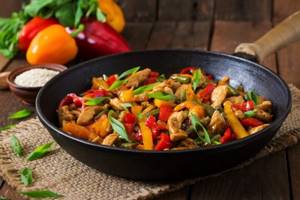
To cook vegetables with butter, you need to take:
- zucchini – 1 pc.;
- eggplant – 1 pc.;
- potatoes – 300 g;
- white cabbage – 500 g;
- onion – 1 medium-sized head;
- water 200-300 ml;
- Sunflower oil – 2 tbsp. l.
Cooking method:
- Wash the vegetables under running water and peel.
- Cut the zucchini, eggplant and potatoes into cubes.
- Shred the cabbage.
- Cut the onion into half rings.
- Place the ingredients in a frying pan and add salt to taste.
- Add water and oil and start simmering.
- Simmer over low heat for 30 minutes.
Calorie content of 100 g of dish is 57.5 kcal.
In its own juice
Vegetables cooked in their own juice retain their aroma, juiciness and taste.

The cooking features are:
- Tomato paste or juice is suitable as a sauce;
- since with this method of stewing vegetables retain their taste, it is recommended to add a minimum of salt;
- stewed cabbage is often included in a weight loss program because it quickly satisfies hunger;
- Do not add oil while stewing, it will change the taste;
- for cooking, choose a pan with a thick bottom;
- you can add spices: coriander, basil, turmeric, garlic, black pepper;
- Do not stew sausages or sausages with vegetables.
To prepare stewed cabbage in its own juice, you need to take:
- cabbage – 0.5 kg;
- carrots – 2 pcs.;
- onion – 1 pc.;
- tomato paste – 200 ml;
- tomato – 5 pcs.;
- bay leaf and spices;
- water – 0.5 cup.
Instead of cabbage, you can add 1 zucchini and 1 bell pepper. The resulting volume of the dish is 1 kg.
Preparation:
- Shred the cabbage and leave for 20 minutes. and squeeze out the juice.
- Cut the tomatoes into cubes, grate the carrots on a fine grater, and cut the onion into half rings.
- Place the vegetables in a saucepan and add water, add bay leaf.
- Light the fire and simmer for 20 minutes.
- Season with tomato paste and spices.
- Leave the dish to cook on the stove for another 25-30 minutes.
Calorie content of 100 g of the finished product is 50 kcal.
In the oven
Cooking features:
- a minimal amount of liquid is added. Due to the low cooking temperature, vegetables release juice, which, when mixed with water, forms a sauce;
- dishes prepared in this way are easily digested by the body;
- To prevent a crust from forming on the vegetables during stewing, the baking sheet or mold should be tightly covered with foil;
- stewing lasts about 60 minutes.

There are 2 ways to cook vegetables in the oven:
- classical. Vegetables cut into cups are stewed with the addition of water or sour cream or cream. After bringing to a boil, the dish remains to simmer in the oven under the lid;
- breezing. Vegetables are cut into cubes and stewed with the addition of broth. At the end of the cooking process, you need to open the lid so that a crust forms on the dish.
To prepare a side dish of vegetables, you need to take:
- eggplant – 2 pcs.;
- sweet pepper – 4 pcs. (you can take 2 red and 2 yellow);
- onions – 2 pcs.;
- cabbage – 0.5 kg;
- oil - if necessary;
- salt, spices and garlic to taste.
Water is not used in this recipe because the vegetables will produce juice without it. The resulting volume of the finished dish is 1.3 kg.
Preparation:
- Wash the vegetables and dry with a towel.
- Peel by cutting off the stems of the eggplants and scooping out the seeds from the peppers.
- Cut all foods into cubes except garlic. It can be cut in half or into thin slices.
- Preheat the oven to 180°C.
- Place the vegetables on a baking sheet and sprinkle with spices and, if desired, drizzle with oil.
- Cook the dish for a maximum of 60 minutes, check readiness after 40 minutes. If the vegetables become soft, then enough time has passed.
The calorie content of 100 g of the finished dish is 40 kcal.
In a slow cooker
Cooking features:
- when selecting the “Stewing” program, the device cooks vegetables at temperatures up to 90 °C, which means it does not destroy beneficial substances;
- Vegetables that take longer to cook should be cut into smaller cubes to speed up the process, and those that cook faster should be cut into larger cubes. For example, beets need 2 times more time than potatoes, which means that when cooking them together they need to be cut into cubes 2 times smaller than potatoes;
- if potatoes are stewed with other vegetables, it is better to salt the dish after the end of the program, otherwise the root vegetable will take longer to cook;
- The finished dish can be sprinkled with finely grated cheese, it will add aroma and a special taste.
To prepare stewed vegetables in a slow cooker, you need to take:
- zucchini – 0.5 kg or 2 pcs.;
- carrots – 2 pcs.;
- tomato – 5 pcs. medium size;
- onion – 1 pc.;
- sweet pepper – 2 pcs.;
- water – 100 ml;
- tomato juice or paste – 200 ml;
- salt and spices.
Optionally you can add:
- beans – 200 g;
- potatoes – 7 pcs.
The volume of the finished dish is 1.5 kg.
Step-by-step preparation:
- Cut the vegetables into cubes, and the onions and peppers into half rings.
- Place all components in the multicooker bowl, close the lid and steam release valve.
- Select the “Extinguishing” program and set the time to 40-60 minutes.
- After notifying the end of cooking, open the lid and carefully stir the dish with a flat spoon so as not to turn it into a homogeneous mass.
Calorie content per 100 g of finished dish is 60 kcal.
Stewed vegetables should be an integral part of the human diet. Their calorie content remains virtually unchanged during the cooking process, and long-term simmering at low temperatures allows them to preserve nutrients and taste.
Preparing the vegetable side dish
Stewed vegetables can be called a signature dish, because every gourmet can independently determine the set of ingredients. Accordingly, these treats will differ in taste and nutritional value. We offer you a simple recipe for making vegetable stew. We use seasonal vegetables, the result is a completely budget-friendly and nutritious dish.
Ingredients:
- white cabbage - one fork;
- potatoes - four tubers;
- laurel leaf - two pieces;
- fresh tomato – one or two pieces;
- salt – ½ teaspoon. spoons;
- carrot - one root vegetable;
- zucchini - one piece;
- onion - one head;
- dried dill - one teaspoon. spoon;
- refined vegetable oil - four tablespoons. spoons.
Preparation:
- To make the stew juicy, it is best to use young zucchini and potato tubers. Let's prepare the necessary vegetables according to the list.
- Remove the top leaves from the cabbage fork. Next, chop the head of cabbage into strips. You can use a special grater.
- Peel the potato tubers and wash them. Dry with napkins and cut them into medium-sized cubes.
- If the zucchini is young, then there is no need to remove the skin from it. Otherwise, remove the seeds and skin.
- Shred the squash pulp into cubes approximately the same size as the potatoes.
- Shred the carrots and cut the onion into small cubes.
- Cut fresh tomatoes into cubes or slices.
- Pour the specified amount of refined vegetable oil into a thick-walled dish, roasting pan or cauldron. Warm it up slightly.
- We will lay out the vegetables in layers. First comes shredded cabbage, then potatoes and zucchini.
- Next we lay out the tomatoes, chopped carrots and onions.
- Season with salt and dried dill. You can also use fresh herbs.
- Add about 200 ml of filtered water here.
- Cover with a lid and simmer the vegetables in a closed container over moderate heat for half an hour.
- Mix the finished stew and serve it warm or chilled.
